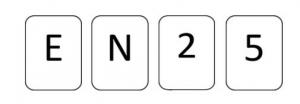Prospective memory: characteristics and associated mental processes
What would we do without memory? Memory configures our vital history and is part of our identity. It is true that when we are told about memory, we tend to think about the past. However, there is another kind of future-oriented memory: prospective memory.
This type of memory allows us to store plans and intentions for the future. For example, it allows me to remember what I have to do tomorrow, plan the day and carry out the planned plans. In this article we will learn what this type of memory “of the future” consists of, its components and what it is for.
- Related article: "Types of memory: how does the human brain store memories?"
What is prospective memory?
Memory is a function of the brain that allows us to use information from our environment (and from within) in various ways: allows us to encode it, store it and retrieve it. According to some theories, memory arises as a result of the repetitive synaptic connections that are formed between our neurons, thus creating neural networks.
Memory is very important for our identity, because it largely defines who we are; In addition, it is a function that we use constantly, in practically all our daily facets.
However, memory is not only about knowing and remembering things from the past, it also allows us to store future-oriented plans and intentions in our brain. Two authors, Kvavilashvili and Ellis, in 1996, named this type of memory: prospective memory.
They defined it as “the memory of doing something at a specific moment in the future and the execution of the previously formulated plan”. That is It includes two components: one more theoretical (remember) and another more practical (execute the plan thought).
- You may be interested: "What is cognitive psychology and what can we learn from this current of research?"
Models
Taxonomic models consider prospective memory as a part of episodic or autobiographical memory; the latter, in turn, consider that it is also divided into retrospective memory (oriented to the past), together with prospective memory (oriented to the future).
According to these models, autobiographical memory makes us aware of our past, and prepares us to act in the future. They consider this an important evolutionary advance, since the information of what we have experienced is essential for self-awareness.
Self-awareness includes a unique, personal and own past, and a future that is also our own, which makes us identify or not with what we are living and remembering.
What is this memory for?
At a cognitive and experiential level, we have already seen how memory plays an essential role in all of us. Specifically, prospective memory also plays a fundamental role in our cognition, since it allows us to function effectively when planning and carrying out activities of daily living.
When we include certain activities or new actions in our daily life (non-routine actions), we do this thanks to previous intentions. These intentions need control and planning to carry out the actions that we want to do, and this is achieved thanks to the prospective memory and the different functions executives.
Components
Some authors have tried to analyze the components that make up prospective memory, with the aim of facilitating its evaluation. Some of them are:
1. metacognition
Its about knowledge necessary and specific to carry out the action.
2. Planning
Formulating the plan is essential to facilitate the implementation of the action.
3. monitoring
Follow the process we want to carry out, step by step.
4. memory content
Remember the content of the action to perform.
5. Accordance
We must agree to perform the action.
6. Checking the result
Is about also monitor the final result, that is, check if we have fulfilled the previous expectations of results, following the formulated plans.
The role of retrospective memory
Prospective memory tasks also have a retrospective (past-oriented) memory component. Let's think of an example to illustrate this: we can forget to give our father a message when we see him, because we have been forgotten the intention to do so (prospective memory) or because we could not remember what we had to say to him (prospective memory). hindsight).
In this way, the prospective memory would include threads such as the registration of intent, information maintenance, execution of intent, and target evaluation.
Relationship with executive functions
It has been shown in some works how prospective memory bears a certain relationship with executive functions. Executive functions allow us to organize, plan, review, and evaluate the behaviors necessary to adapt effectively to the environment; In addition, they are a guide that allows us to achieve goals.
Said relationship refers to the fact that prospective memory requires executive control processes to function; Let's imagine that I have to call the dentist at 12 to make an appointment. I'm more likely to remember to call if I have a toothache at 11. Therefore, if the system receives continuous information in relation to what we must do, this information will operate as a signal that will update the system so that it is more efficient.
Thus, the executive functions are of great importance, since they allow the person to review and evaluate the information constantly to “update” what is happening to you, and this makes it easy for you to remember what must do. In other words, said mental "check-up" has a lot to do with both concepts: prospective memory and executive functions (because it allows assessing what the person has done and what remains to be done do).
Bibliographic references:
- Kvavilashvili, L., Ellis, J. (1996). Varieties of intention: some distinction and classifications. In Brandimonte M, Einstein GO, McDaniel MA, eds. Prospective memory: theory and applications. Hillsdale, NJ: Erlbaum Associates.
- Tulving, E. (2002). Episodic memory: from mind to brain. Annu Rev Psychol, 53, 1-25.
- Tirapu-Ustarroz, J. and Muñoz-Céspedes, J.M. (2005). Memory and executive functions. REV NEUROL, 41(8), 475-484.

